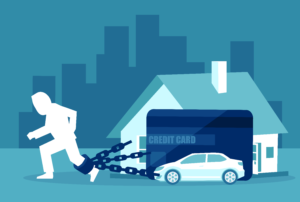What is Debt Load?
Debt load is a term that is used to describe the amount of debt a consumer has. It is often used to understand if you are carrying a “safe” amount of credit. The debt/income ratio is figured monthly, and reveals either how good, or bad, your financial picture is on a day-to-day basis.
Want to know how you can figure this ratio for yourself?
Add all of your non-housing monthly payments except for your utilities or taxes, and then compare that total with your total gross annual wages divided by 12. If you don’t have fixed monthly payments on revolving debts such as credit cards, you can estimate your monthly payments at 4% of the total amount you owe. When you divide your monthly debt payments by your total monthly income, you will get your monthly non-housing debt/income ratio. It is usually expressed as a percentage so move the decimal point two places to the right.
Here’s an example to figure out your Debt Load:
If your gross monthly income is $2,000 and monthly debt is $500 (credit card payments, gasoline bills, and car payments)
ex. $500/$2000 = 25%
Your debt/income ratio is 25%
Here’s a comfortable rule of thumb to follow:
If your non-housing debt is 10% or less you’re in great financial fitness.
If your non-housing debt is between 10% – 20%, then you’ll probably be able to get credit, but as you approach 20%, you’re getting too high!
We hope this article about Financial Debt Loads helps you understand how to determine the amount of debt load you have. Please contact us if you have any questions about your financial debt load.

